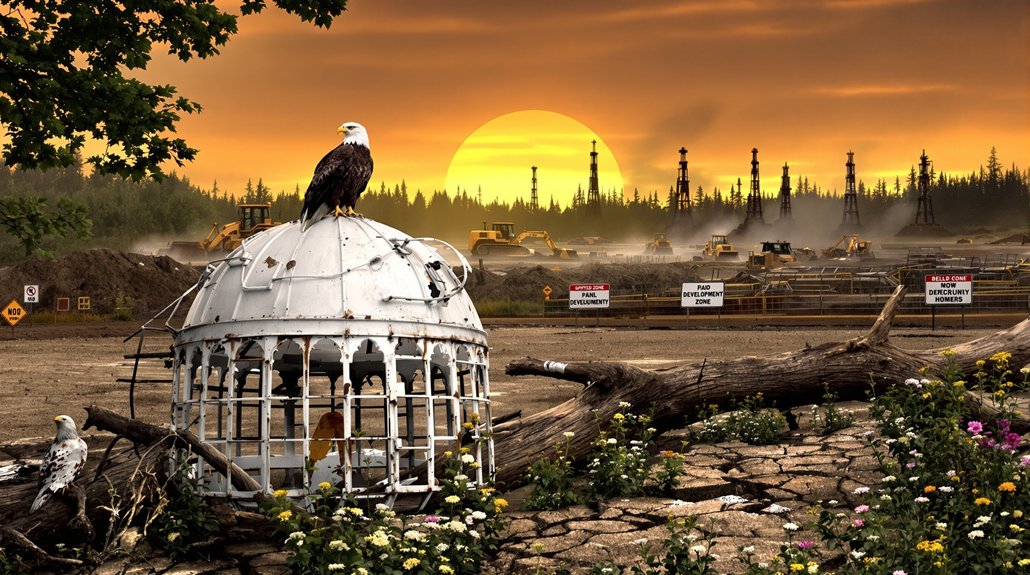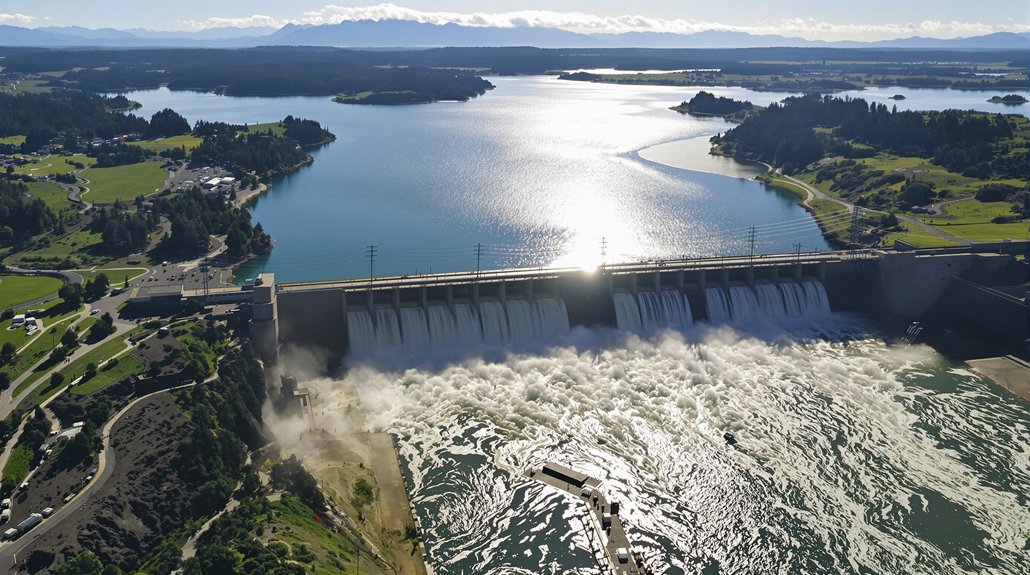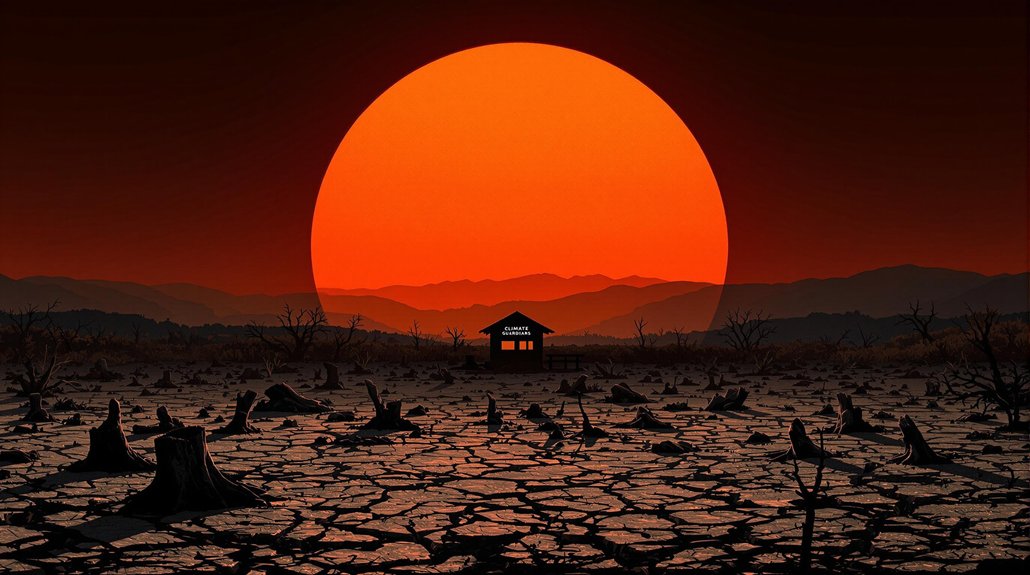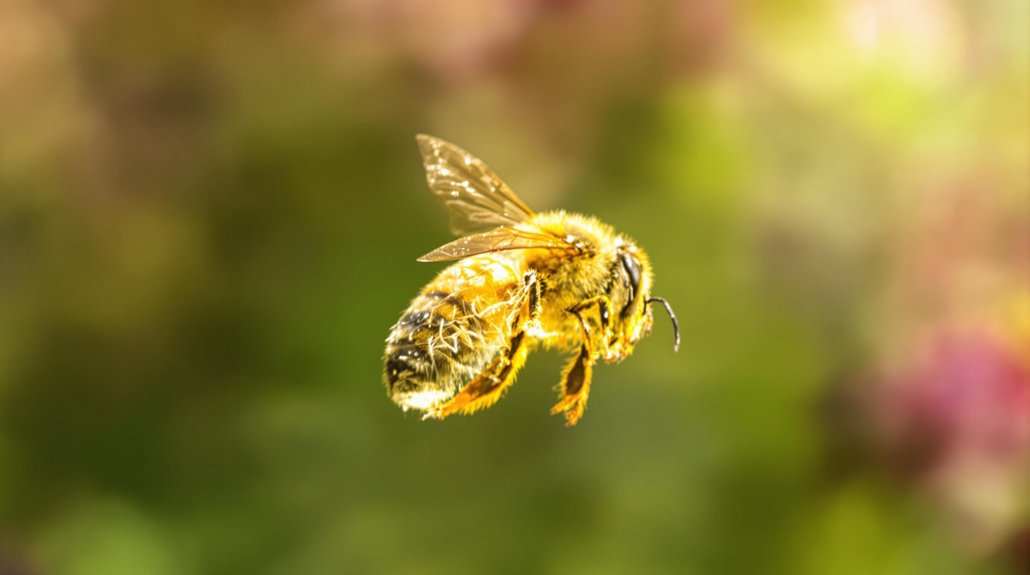Dozens of America’s most vulnerable species face a grim future as the White House quietly dismantles their legal protections. A bombshell proposal from April 2025 would redefine “harm” under the Endangered Species Act, conveniently excluding habitat destruction—the very thing killing off 71.3% of endangered species. Funny how that works.
The change would green-light logging, drilling, and development in critical habitats without those pesky environmental assessments. Meanwhile, the White House is collecting even more rollback proposals targeting species listings and habitat designations. Because apparently, we haven’t lost enough wildlife yet.
Under this proposal, bulldozers trump bald eagles—because who needs endangered species when there’s money to be made?
“It’s a death sentence,” said one conservation official who requested anonymity. The timing couldn’t be worse. Just last year, 21 species were declared extinct, with habitat loss as the primary culprit. But sure, let’s make habitat destruction legal. Brilliant.
The proposals remain hidden from public view while under review at the Office of Information and Regulatory Affairs. Industry representatives get private access to influence the final rules before anyone else sees them. Democracy at its finest.
The administration has already ordered agencies to fast-track infrastructure projects by suspending ESA restrictions deemed “burdensome.” Translation: if protecting an endangered species might slow down a new highway, too bad for the critters.
These changes directly contradict the Supreme Court’s ruling in Babbitt v. Sweet Home, which confirmed that habitat destruction constitutes harm under the ESA. But who needs legal precedent when there’s money to be made?
Conservation efforts are taking additional hits from budget cuts and staff reductions. With fewer rangers and field scientists, who’s monitoring these vanishing species? Nobody, apparently.
The ESA has only achieved a 3% recovery rate since 1973. Now, instead of improving that dismal statistic, we’re watching conservation groups divert resources from fieldwork to courtrooms as lawsuits pile up. Meanwhile, species continue disappearing. But hey, at least the paperwork will be simpler.
This dismantling follows a January 2025 national energy emergency declaration directing federal agencies to prioritize energy production over species protection. Environmental advocates like Stephanie Kurose have expressed strong opposition to these changes, arguing they will significantly set back wildlife protection efforts.
References
- https://eelp.law.harvard.edu/tracker/endangered-species-act-regulations/
- https://www.eenews.net/articles/white-house-once-again-eyes-big-esa-rule-changes/
- https://nywolf.org/2025/05/trump-administration-proposes-rule-that-would-destroy-endangered-species-habitat/
- https://naturalresources.house.gov/news/documentsingle.aspx?DocumentID=416964
- https://insideclimatenews.org/news/24082025/trump-administration-dismisses-endangered-species-list/








